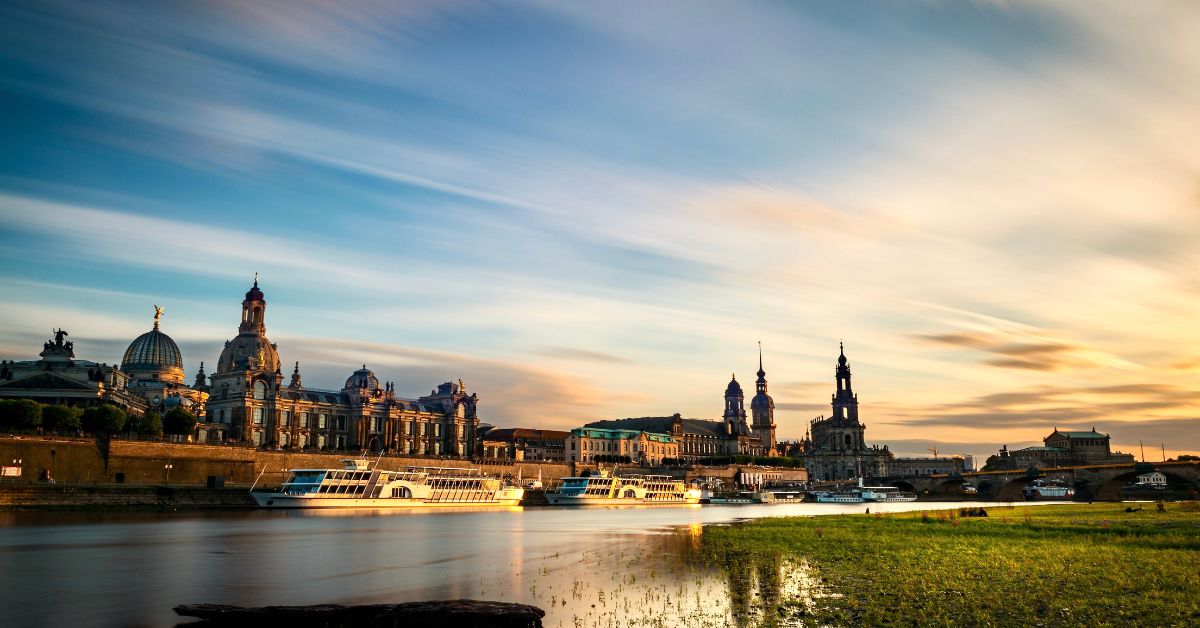- Home
- Top German Cities To Visit
- Dresden Photo Gallery
- Procession of Princes, Dresden
Dresden’s Procession of Princes – History in 24,000 Tiles
By: Eran Fulson / Traveler & Blogger / After 15+ years of travel across North America and Europe, I now help travelers experience Germany beyond the guidebooks with firsthand tips and cultural insights.
About the Photo
My favorite time of day to explore Dresden? At the end. Streetlights danced off the meticulously carved stonework, truly testing the battery of my camera. This moody evening shot captures the Procession of Princes in all its tiled glory—glowing gold against the cobbled alley as if the Saxon royalty themselves requested perfect lighting.
Stretching across the outer wall of Dresden Castle, this mural depicts 35 kings, dukes, and assorted power players from the House of Wettin. And just in case you thought it was a painting… it’s not. It’s made from more than 23,000 hand-painted porcelain tiles, making it the largest porcelain artwork in the world—because why stop at oil on canvas when you can go full porcelain wall installation?
Historical Significance
- Commissioned in the 1870s to celebrate the 800th anniversary of the Wettin Dynasty
- The original was painted in limewash, but that didn’t hold up well in German weather—so in 1907, it was replaced with Meissen porcelain tiles (durability and flex points)
- Features a parade of rulers on horseback, complete with scholars, farmers, and children—because the 700s to 1800s were apparently family-friendly monarchy hours
- Survived WWII bombings almost completely intact, proving once again: porcelain is tougher than it looks
How to Visit the Procession of Princes
- Location: Augustusstraße, Dresden Old Town
- Opening Hours: Always open—this one’s outdoors, and completely free
- Closest Transport / Tram stop: Theaterplatz or a short walk from Dresden Frauenkirche
Tip: Visit at dusk to see the tiles glow under the streetlamps—or early morning if you're aiming for that perfect “no tourists in my shot” moment.
What is the Procession of Princes in Dresden?
What is the Procession of Princes in Dresden?
It’s a 102-meter-long mural made of 24,000 porcelain tiles depicting a procession of Saxon rulers from the 12th to 20th century. It's basically Dresden’s royal LinkedIn endorsement wall.
Why is the Procession of Princes made of porcelain?
Why is the Procession of Princes made of porcelain?
Because limewash + German weather = bad combo. The original fresco began to fade, so they replaced it with Meissen porcelain tiles in 1907—a more weather-resistant (and luxurious) solution.
Is the Procession of Princes free to visit?
Is the Procession of Princes free to visit?
Absolutely. It’s on a public wall in the heart of the Old Town—no ticket needed, no queues, just you and 800 years of royal history staring back at you.


